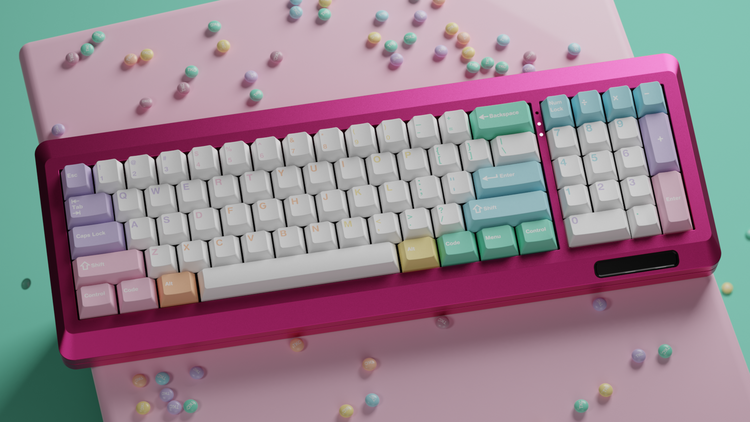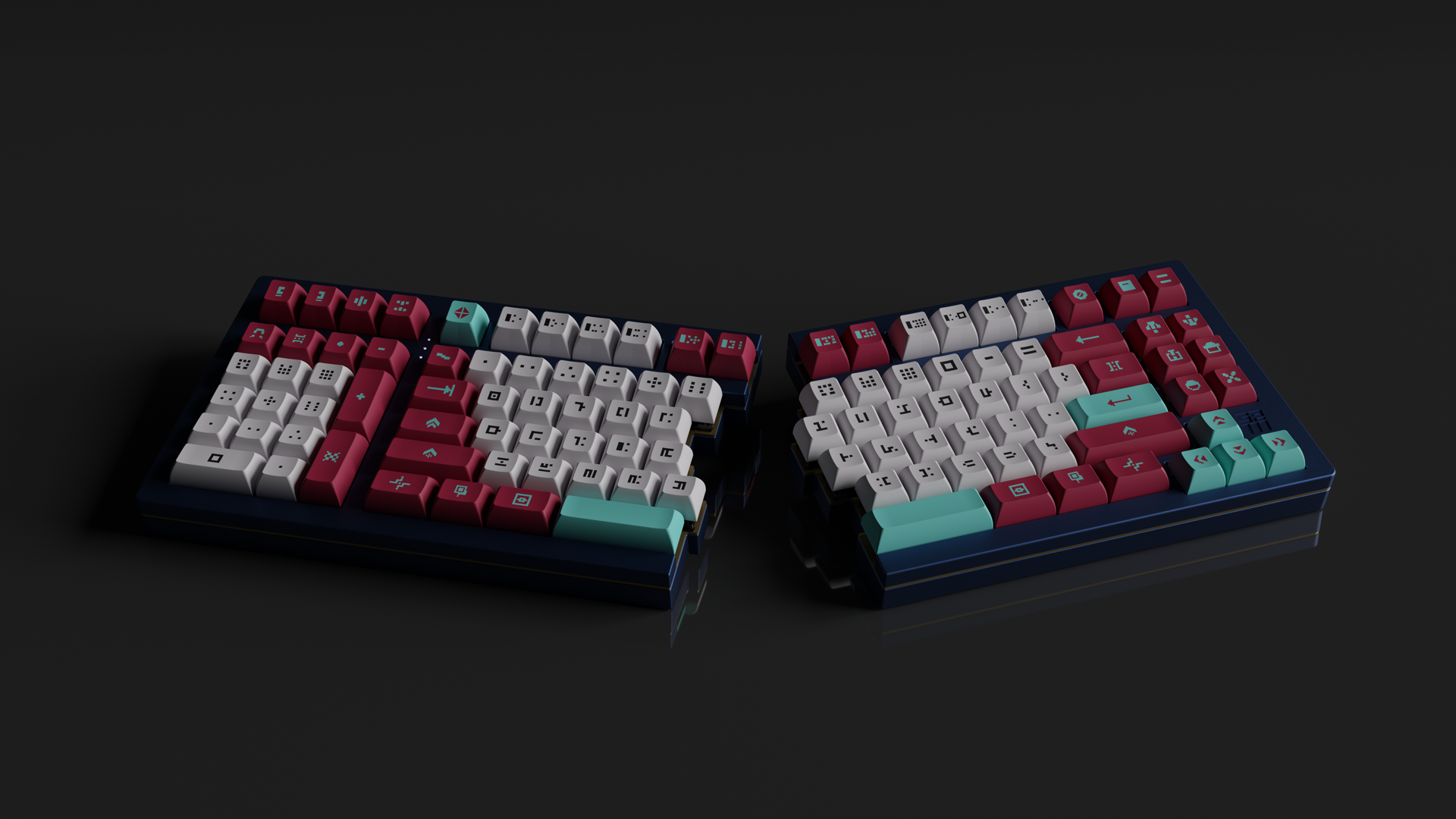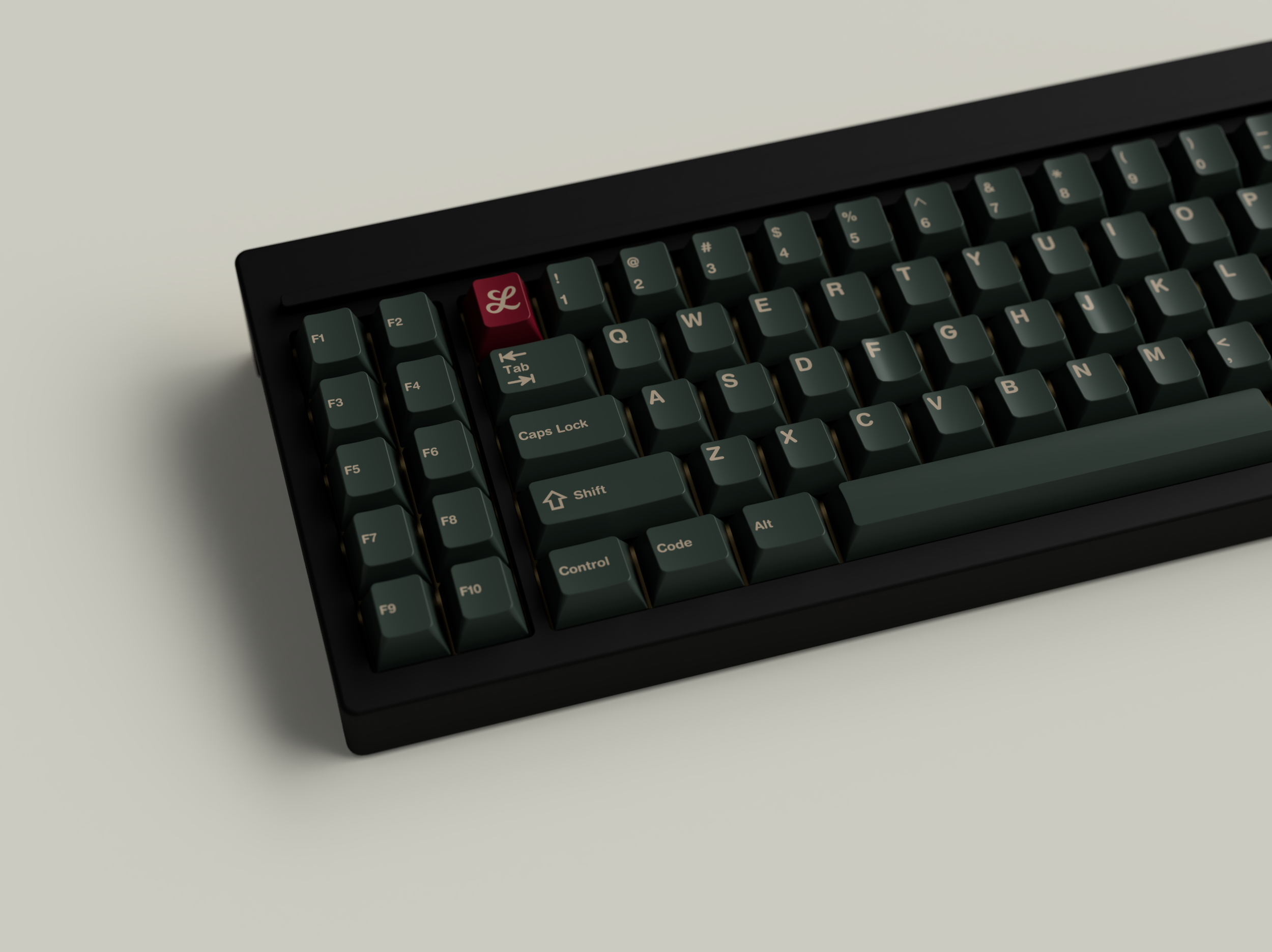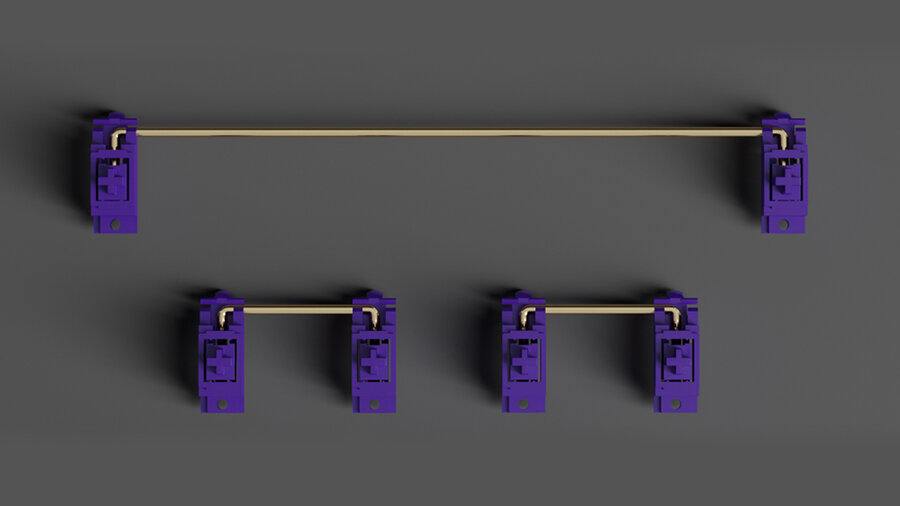Stabilizers
Stabilizers (often called 'stabs') are keyboard parts that prevent larger keys from wobbling when pressed, and help bind the keycap to the switch. They sit next to the keyboard switch to stabilize the keycap when you press it.
Stabilizers mounted on a PCB. These here are for backspace, enter, and the spacebar.
Most keyboards require multiple stabilizers, since most will have multiple large keys. Keys that are 2u or larger need a stabilizer. These usually include keys like the shift keys, backspace, enter/return key, and spacebar.
Keys that are 2u or larger require a stabilizer. A 60% layout would need these four 2u stabilizers and one spacebar (6.25u) stabilizer.
Keycaps 101 — 2u refers to the size of the keycap. A 2u key like Backspace is twice as long as a 1u key like the letters or numbers. Learn more in our keycaps article.
Stabilizers on a standard layout
On a typical 60% or TKL keyboard layout, you would have stabilizers on the following keys:
Modifiers
Left shift key (2.25u) — 2u stabilizer
Backspace (2u) — 2u stabilizer
Enter/Return key (2.25u) — 2u stabilizer
Right shift key (2.75u) — 2u stabilizer
Spacebar
Spacebar (6.25u) — 6.25u stabilizer; or
Spacebar (7u) — 7u stabilizer
Spacebar size can vary by keyboard layout.
Key sizes and the required stabilizers on a 60% layout.
Total stabilizers for a 60% or TKL keyboard:
Four 2u stabilizers
One spacebar stabilizer (6.25u or 7u, depending on your layout)
A numpad like above would need three 2u stabilizers.
If there's a numpad, such as on a full-size (100%) or 1800 layout, you'll also have:
0 key (2u) — 2u stabilizer
Plus key (2u) — 2u stabilizer
Enter/Return key (2u) — 2u stabilizer
C³Equalz X TKC Screw-in Stabilizers — purple housing and stem with gold wire.
Everglide Stabilizers — transparent housing with gold wire
Stabilizer Mounts
Stabilizers can be attached to your keyboard in a couple of different ways.
PCB-mounted stabilizers are attached to the keyboard PCB. These can either be clamped onto the PCB, or screwed into it. Screw-in stabilizers are more securely attached to the PCB.
Most custom keyboards—i.e. boards you build yourself, rather than buying off-the-shelf—use PCB-mounted stabilizers.
See our step-by-step tutorial on how to use screw-in stabilizers →
Plate-mounted stabilizers are attached to the keyboard plate.
Buying Stabilizers
Stabilizers are usually sold in kits that contain a number of 2u stabilizers and spacebar stabilizers.
2u stabilizers are for keys like the shift keys, backspace, and enter/return key. 2u stabilizers fit on keys that are 2u, 2.25u, 2.5u, and 2.75u.
Spacebar stabilizers fit more precisely—a 6.25u spacebar will use a 6.25u stabilizer; a 7u spacebar will use a 7u stabilizer.
When buying stabilizers, you’ll need to know what keys on your keyboard will need them. This means all keys that are 2u and larger. Note the spacebar size as well.
Mixing and matching the housings and stems of C³Equalz X TKC Screw-in Stabilizers.
How many stabilizers do I need for [x] keyboard?
Want to make sure you've got the right stabs for your next keyboard build? We've broken down the stabilizer needs from our most recent TKC lineup of keyboards, and will serve as a useful cheat sheet for other keyboards of the same format.
Full-size (100%) — 7x 2u stabs + 1x 6.25u/7u stab
TKL (Tenkeyless) — 4x 2u stabs + 1x 6.25u/7u stab
60% — 4x 2u stabs + 1x 6.25u/7u stab
Portico (65%) — 3x 2u stabs + 1x 6.25u stab
MiniVan — 2x 2u stabs
CandyBar — 4x 2u stabs + 1x 6.25u stab, depending on configuration
SP-111 — 9x 2u stabs at most, depending on configuration
M0LLY — 7x 2u stabs + 1x 6.25u/7u stab
Godspeed75 — 3x 2u stabs + 1x 6.25/7u stab
TKC1800 — 5x 2u stabs + 1x 6.25/7u stab
Further reading: Keyboard Sizes and Layouts →
Related Content
Using Screw-in Stabilizers — our step-by-step tutorial on how to assemble and install PCB-mount, screw-in stabilizers










